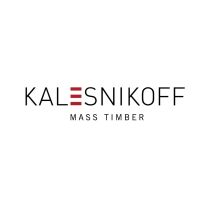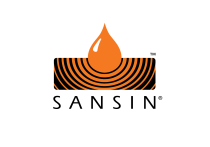- Project uploaded by Canadian Wood Council on 03-29-2023
- Project last updated by WoodWorks on 01-21-2025
Richmond Olympic Speed Skating Oval
Richmond, BCThe Richmond Olympic Oval is approximately 43,000 sq.m. in gross area. The second level is the primary activity space; its width approaches 100m and was clear spanned so that the 8,000 Olympic spectators experienced no visual obstruction. The ultimate post-Games use of the building consists of community and high-performance sport, recreation and training facilities (e.g ice sheets and volleyball/basketball courts). The building is a strategic urban design destination icon with a significant role in the transformation of the local area to a high-amenity neighbourhood and a riverfront circulation node.
The program-mandated clear span for the 100m width of the building was in many ways the most demanding parameter of the design. The use of wood and composite wood products to achieve this structural feat was driven by cultural and sustainability criteria. The design team and the City of Richmond made the decision early in the design process to use local and regional sustainably produced materials – in particular wood – to connect with the First Nations’ building aesthetic. The aim was also to showcase, on the world stage, the province’s resources and ability to use them in challenging and creative ways. Ultimately, the design goal was to achieve a warm and inviting aesthetic in a cost effective way.
While the size of the building effectively prohibited the use of wood for every building component, the primary element of the superstructure – the roof – lent itself very well to the use of wood. The design poetic of ‘flight, flow and fusion’ resulted in a roof shape that evoked the dynamism of flight through its resemblance to Heron wings and wing-tips. This is an image that resonated well with the First Nations’ imagery that was identified in the design team’s collaboration with the Musqueam Nation. The use of wood, the history of the site and the design poetic of flight were fused to result in the warm, open and inviting final solution.
The most important parameter in the design of the Richmond Olympic Oval was the imperative of keeping the project on budget. The composite glulam-steel arches that span the main space were adopted early in the design process. The thin, hollow sectional V shape of the torque tube arch elements emerged out of the integrated design process as an elegant, cost-effective strategy for the 98m-long span. The arch element seamlessly integrates HVAC ducting and distribution, sprinkler mains and primary electrical runs to service the space below.
The WoodWave© roof deck system is a proprietary, locally designed and custom-built system which met the architectural, structural and acoustical goals for the roof and ceiling of the Oval. It is a discrete, secondary structural system that bears on the arches through a mediating wide flange beam, which bears on the top of the glulams over the center two thirds of the long span and peels up and away to the south to integrate clerestory glazing and the primary lateral service runs. The “feathers” peel up and away to the north opening the space up to generous, diffused daylight and dramatic views of the Fraser River and coastal mountain range beyond.
The second major design constraint was the combustibility of wood. The building code calls for non-combustible construction for structures the size of the Oval. The design team had to provide significant fire engineering modeling to obtain an equivalency (alternate solution) under the British Columbia Building Code to enable combustible roof construction. Weather protection (both during construction and during the life of the building), acoustic attenuation and reverberation performance, dimensional stability over time and sole-sourced procurement (of proprietary technology of the WoodWave deck) were some of the other wood-related issues that had to be overcome by the architects and the entire design team.
The acoustic considerations for the space were resolved by the increased material mass of the roof and the acoustic lining of the interior of the WoodWave panels, with the gaps in the panel surfaces being effectively sized and tested prior to mass-production. The fire protection sprinkler lines and heads were seamlessly integrated into the inner form of the WoodWave roof deck assembly. The only expression of this system is the small head projections from the bottom of alternating panel Vs.
The project offered an opportunity, through client initiative and the design team’s expertise, to take an innovative step in the evolution of British Columbia’s wood construction culture. Building designers in British Columbia are aware of the cultural, environmental and programmatic sustainability issues that impact their region. The team recognized that a collective approach to design would allow for the most accountable, inclusive and ultimately successful solution. Through collaboration, the design team came to understand the rich cultural heritage of the First Nations’ building tradition, the effects of the pine beetle infestation, the engineering issues of long-span structures, and cost and procurement issues associated with an original and innovative use of wood products on such a large scale. Ultimately, the best way to support the wood culture of British Columbia was to inspire the public, users and designers with the possibilities inherent in the use of this wonderful, renewable, local building material.
The Richmond Olympic Oval was seen as the signature venue of the 2010 Winter Olympic Games and the great wood roof has become one of the most memorable architectural images of the games. Given the significant advances in structural design, the architectural expression of dynamic movement, the integration of all building systems and the inviting warmth of the building material, the Richmond Olympic Oval is an important ambassador of the local history, environment and skill.
Project Details
-
Year Built
2009
-
Number Of Stories
1
-
Bldg system
Mass Timber
-
Square footage
43000
-
Construction Type:
Unknown
-
Building Type:
Civic (Recreational)
-
Material Types:
Hybrid (wood with steel or concrete)
Project Team
-
Fast + Epp Structural Engineer
-
Kalesnikoff Mass Timber
-
Sansin Architectural wood finishes
-
StructureCraft WoodWave Roof Panels Design-Builder
-
CannonDesign Architect
-
City of Richmond Owner
-
Dominion Fairmile Construction Company Construction Manager
-
MHPM Project Managers Inc. Project Manager
-
Paul Fast Engineer of Record
- Project uploaded by Canadian Wood Council on 03-29-2023
- Project last updated by WoodWorks on 01-21-2025



 WOODWORKS
INNOVATION
NETWORK
WOODWORKS
INNOVATION
NETWORK








